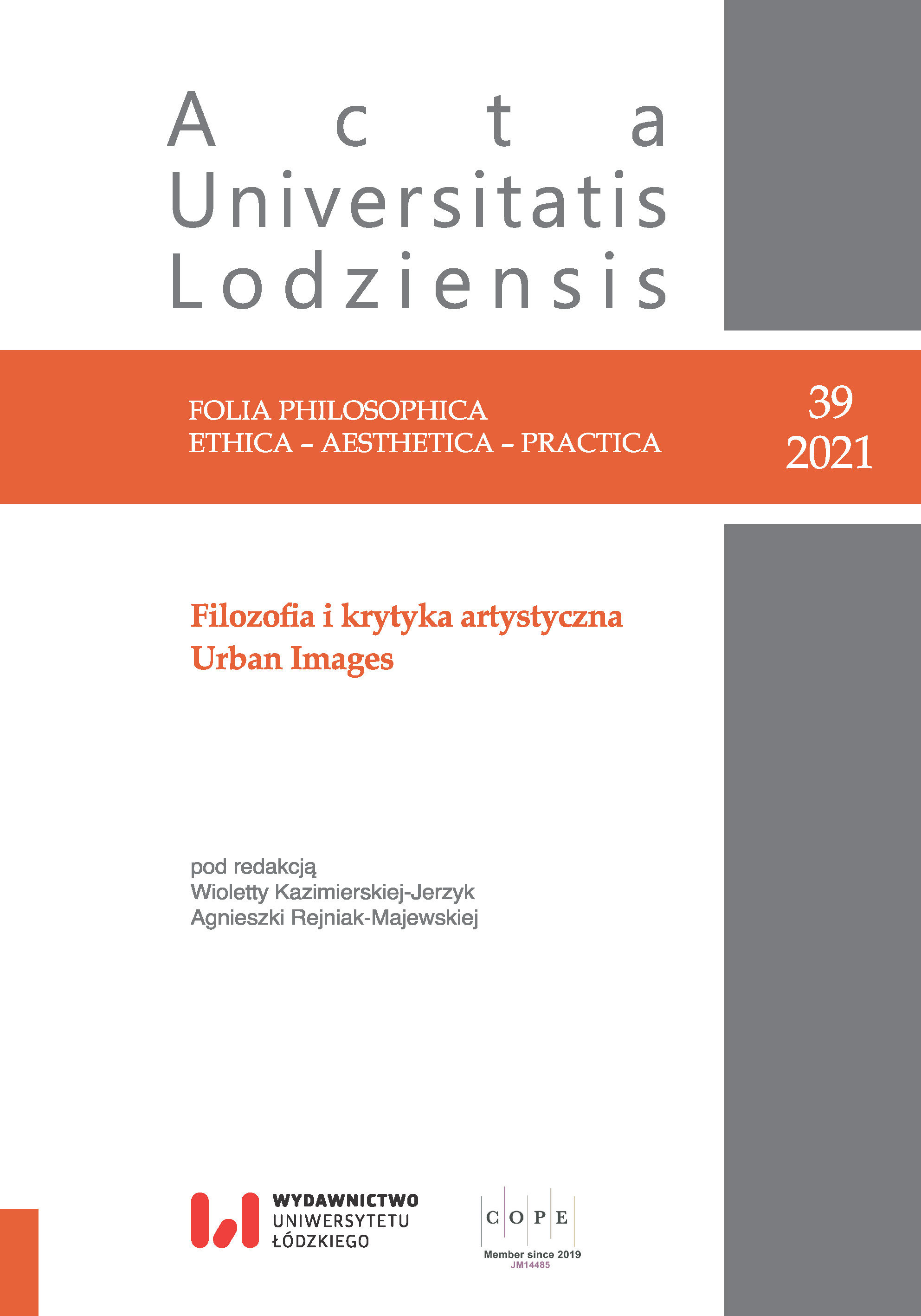Milan and its lost river: when surviving images represent unique narrations of invisible relationships
DOI:
https://doi.org/10.18778/0208-6107.39.06Słowa kluczowe:
Milan, photography, nostalgia, urban landscapeAbstrakt
One of the most predictable implications of photography consists of the ability to fix some images returning them in a variable timeframe for the observation. In all the major world cities, it is common to incur in some book where recent photos are compared to old ones searching the same point of view in order to make the comparison more accurate and stimulate the critical ability of the observer. An exercise that sometimes stimulates a sort of regret for the past, pointing out a diffused excess of nostalgia for times gone by. Nevertheless, the reality and meaning of modern city images are not always so prosaic. What happens when photographs are evocative of a reality that is completely lost in the collective imaginary even though it still exists and functions, despite being forgotten and buried in the depths of the city? This is the case of very few pictures capable of telling the story of a city, Milan, and its only “real” river, the Olona, whose waters, humiliated and rejected, continue to flow in total amnesia. It is a different story when photography does not have the role of nourishing nostalgia, but the power to make visible and explain the variation of a presence and its progressive obliteration. Some pictures testify to the passage from the bucolic amenity of the river and its banks in a pre-urban context to a muscular urban infrastructure. A rigid channelized river, shown with confidence, is trying to keep its presence, until the moment of its inevitable decline and disappearance. It is in these images that the possibility of reconsidering the Olona as a part of the new project for the city lies.
Bibliografia
Alonzo, È. (2016). Les apories de l’hybride. Pour une nouvelle relation entre architecture et infrastructure. Marnes documents d’architecture, 4, pp. 290–307.
Google Scholar
Barthes, R. (1981). Camera Lucida. New York: Hill and Wang.
Google Scholar
Bolton, T. (2011), London’s Lost Rivers: a walker’s Guide. London: Strange Attractor Press.
Google Scholar
Calvino, I. (1974). Invisible cities. San Diego: Harcourt Brace Jovanovich.
Google Scholar
Carandini, A. (2017). La forza del contesto. Bari–Roma: G. Laterza & Figli.
Google Scholar
Cassone, A. and Biscardini, R. (2014). Riaprire i navigli si può. Un grande progetto per Milano. Milano: Biblion.
Google Scholar
Columbo, A. (1960). La Fognatura di Milano. Storia, indagini, studi, progetti. Milano: Quaderni della Città di Milano.
Google Scholar
Corboz, A. (1983). The Land as Palimpsest. Diogenes, 31 (121), pp. 12–34.
Google Scholar
Cordani, R. (2004). Milano, il volto di una città perduta. Milano: CELIP.
Google Scholar
De Marchi, G. (ed.), (1948). Sistemazione delle acque della zona lombarda fra Ticino e Adda. Milano: Macciachini.
Google Scholar
Della Morte, S. and Lissoni, O. (1935). La Milano voluta dal Duce e la vecchia Milano. Milano: Officine Grafiche Esperia.
Google Scholar
Gambi, L. and Gozzoli, M. C. (1982). Le città nella storia d’Italia: Milano. Bari–Roma: G. Laterza & Figli.
Google Scholar
Helmerdig, S. (2016). Fragments, Futures, Absence and the past. A new approach to photography. Bielefeld: Transcript.
Google Scholar
Latour, B. (2020). La sfida di Gaia. Il nuovo regime climatico. Roma: Meltemi.
Google Scholar
Marescotti, C. (1956). La sistemazione idraulica del territorio milanese. Atti del Collegio degli Ingegneri di Milano, 7–8, pp. 1‒8.
Google Scholar
Massari, U. (1929). La deviazione del fiume Olona secondo il tracciato di Piano regolatore (legge 12/7/1912, n. 866) e la sistemazione del fiume Lambro Meridionale. Milano: Stabilimento Tip. Stucchi.
Google Scholar
Neumann, J. E. et al. (2015). Climate change risks to U.S. infrastructure impacts on roads, bridges, coastal development, and urban drainage. Climatic Change 131, pp. 97–109.
Google Scholar
Poggi, F. (1913). Le Fognature di Milano. Milano: Vallardi.
Google Scholar
Ranzato, M. (ed.) (2017). Water Vs. Urban Scape. Exploring Integrated Water-Urban Arrangements. Berlin: Jovis.
Google Scholar
Serres, M. (1991). Il contratto naturale. Milano: Feltrinelli.
Google Scholar
Sterling, C. (2019). Heritage, Photography, and the Affective Past. London: Routledge.
Google Scholar
Talling, P. (2011). London’s Lost Rivers. London: Random House Books.
Google Scholar
Tsing, A. et al. (eds.), (2017). Arts of living on a damaged planet. Minneapolis: University of Minnesota Press.
Google Scholar
Wild, T. C., et al. (2011). Deculverting: reviewing the evidence on the “daylighting” and restoration of culverted rivers. Water and Environment Journal, 25, pp. 412–421.
Google Scholar
Pobrania
Opublikowane
Jak cytować
Numer
Dział
Licencja

Utwór dostępny jest na licencji Creative Commons Uznanie autorstwa – Użycie niekomercyjne – Bez utworów zależnych 4.0 Międzynarodowe.












